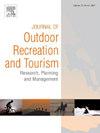Awe experiences on Kumano Kodo with a kataribe
IF 4.4
3区 管理学
Q1 HOSPITALITY, LEISURE, SPORT & TOURISM
Journal of Outdoor Recreation and Tourism-Research Planning and Management
Pub Date : 2025-09-30
DOI:10.1016/j.jort.2025.100966
引用次数: 0
Abstract
Kumano Kodo, a UNESCO World Heritage site, is an ancient network of pilgrimage routes in Japan's Kii Peninsula, renowned for its cultural and spiritual significance. Recent research highlights (a) the importance of awe experiences in both nature-based and pilgrimage tourism contexts, and (b) that a kataribe, a local tour guide with historical insights, knowledge of conservation efforts, and the ability to interpret local culture and nature, may enhance awe experiences during walks on Kumano Kodo. This study aims to examine whether walking on Kumano Kodo with a kataribe contributes to awe experiences. Useable data were collected from 24 undergraduate students, 13 of whom were accompanied by a kataribe. Awe experiences were assessed using self-report and psychophysiological measurements, specifically salivary amylase levels. Findings revealed that walking on Kumano Kodo significantly increased awe experiences, regardless of the presence of the kataribe. However, follow-up analyses indicated that participants walking with the kataribe experienced significant increases in awe experiences at specific sites characterized by notable tourism attractions. This study suggests that while the intrinsic attributes of Kumano Kodo evoke awe, the information provided by the kataribe can enhance these experiences, with the impact being most pronounced at the beginning and end of the tour. No significant changes were observed in amylase levels, likely due to the counteracting effects of physical activity. The research highlights the pivotal role of a kataribe in enriching tourist experiences and emphasizes the importance of kataribe-led briefings at the beginning and end of the tour to enhance awe experiences.
用武士刀在熊野古道上的敬畏体验
熊野古道被联合国教科文组织列为世界遗产,是日本纪井半岛的一个古老的朝圣路线网络,以其文化和精神意义而闻名。最近的研究强调了(a)敬畏体验在以自然为基础的旅游和朝圣旅游背景下的重要性,以及(b)具有历史见解、保护工作知识和解释当地文化和自然能力的当地导游kataribe可以增强熊野古道漫步时的敬畏体验。本研究旨在探讨在熊野古道上行走是否有助于敬畏体验。研究人员从24名本科生中收集了可用的数据,其中13名学生由一名志愿者陪同。使用自我报告和心理生理测量来评估敬畏体验,特别是唾液淀粉酶水平。研究结果显示,在熊野古道上行走显著增加了敬畏体验,无论kataribe是否存在。然而,后续分析表明,与kataribe一起行走的参与者在具有著名旅游景点特征的特定地点的敬畏体验显着增加。这项研究表明,熊野古道的内在属性唤起了敬畏,而kataribe提供的信息可以增强这些体验,其影响在游览的开始和结束时最为明显。没有观察到淀粉酶水平的显著变化,可能是由于体育活动的抵消作用。该研究强调了导游在丰富游客体验方面的关键作用,并强调了导游在旅游开始和结束时引导的简报的重要性,以增强敬畏体验。
本文章由计算机程序翻译,如有差异,请以英文原文为准。
求助全文
约1分钟内获得全文
求助全文
来源期刊

Journal of Outdoor Recreation and Tourism-Research Planning and Management
HOSPITALITY, LEISURE, SPORT & TOURISM-
CiteScore
6.70
自引率
5.30%
发文量
84
期刊介绍:
Journal of Outdoor Recreation and Tourism offers a dedicated outlet for research relevant to social sciences and natural resources. The journal publishes peer reviewed original research on all aspects of outdoor recreation planning and management, covering the entire spectrum of settings from wilderness to urban outdoor recreation opportunities. It also focuses on new products and findings in nature based tourism and park management. JORT is an interdisciplinary and transdisciplinary journal, articles may focus on any aspect of theory, method, or concept of outdoor recreation research, planning or management, and interdisciplinary work is especially welcome, and may be of a theoretical and/or a case study nature. Depending on the topic of investigation, articles may be positioned within one academic discipline, or draw from several disciplines in an integrative manner, with overarching relevance to social sciences and natural resources. JORT is international in scope and attracts scholars from all reaches of the world to facilitate the exchange of ideas. As such, the journal enhances understanding of scientific knowledge, empirical results, and practitioners'' needs. Therefore in JORT each article is accompanied by an executive summary, written by the editors or authors, highlighting the planning and management relevant aspects of the article.
 求助内容:
求助内容: 应助结果提醒方式:
应助结果提醒方式:


